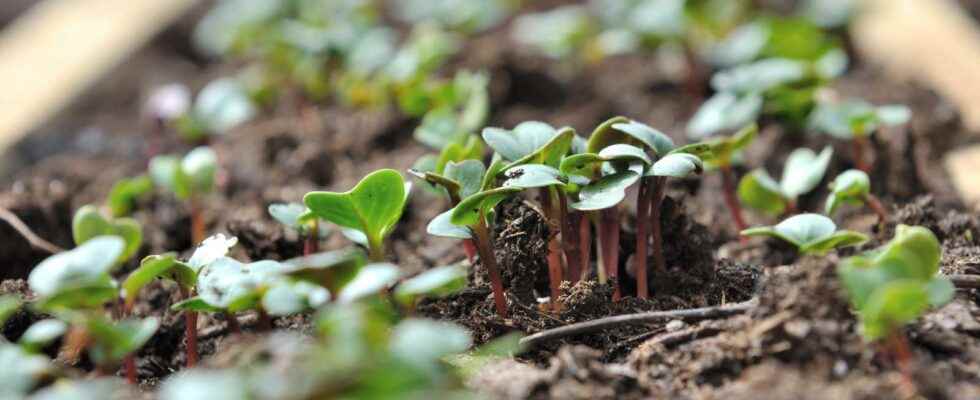From January, the gardener begins his first sowing despite the winter cold. To anticipate plantings and harvests, there is the technique of sowing under a warm layer in order to keep the seeds warm and to be able to transplant beautiful early plants.
You will also be interested
How to anticipate the vegetable harvests in the vegetable garden? By practicing the hot diaper technique. By creating a millefeuille of materials plants which, by fermenting, will heat the earth which will be able to receive the small seeds. From January, you will be able to sow the first spring vegetables.
When to seed under a warm layer?
Normally, outdoor and soil temperatures are too low in January to start planting. The seeds will never germinate. In order to compensate for these weather conditions of season, the gardener can place seedlings under a warm layer, from January to March.
What is a warm diaper?
This is to put a bed of manure 50 centimeters high (horse, preferably) charge in an enclosed space such as a pit, tunnel or in a frame. Cover it with a layer of garden soil about 30 centimeters, mixed with leaf mold, and water everything, closing the frame well. The fermentation manure will thus release heat and the soil on the surface, once warmed, will be able to accommodate, early in the year, the first sowings. Wait about a week to feel the heat release from the ground. Don’t be surprised if the temperature is over 60 ° C. Take the soil temperature regularly using a thermometer special compost and wait until it stagnates at 20 or 25 ° C to start the first sowing.
This preparation step is essential, so monitor the temperature every day. If the Sun heats up during the day, ventilate the chassis a little and close it well in the evening. If very cold nights are expected, cover the frame with burlap bags, a wintering veil or canisses to limit temperature variations. You will be able to obtain early plants from the first months of the year and also anticipate planting.
What vegetables to sow in a hot layer?
Early vegetables often come from a hot layer. Sown from mid-January or early February, they are harvested from March-April. Among the spring vegetables, we find the small carrots, the turnips spring, the peas, the young shoots ofspinach, the little ones onions white radish and young spring lettuce. Once these early sowing is done and the young plants transplanted into the vegetable garden, use the mixture of manure, soil and leaf compost to sow summer vegetables such as tomatoes, eggplants, cucumbers, zucchini Where squash. Offer to this substrate rich and warm, a second life. Make your sowings in April or May, keep the buckets sheltered in a greenhouse or a tunnel before planting them in the vegetable garden.
Interested in what you just read?
.
fs10
